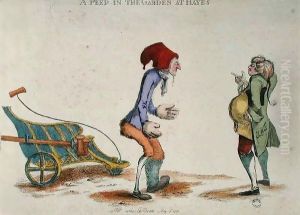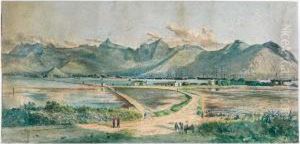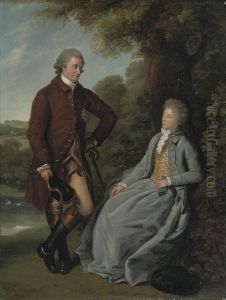William Austin Paintings
William Austin (1721–1820) was an English artist known primarily for his satirical prints. His work was part of a tradition of English caricature that became quite popular in the 18th century, which included artists such as William Hogarth and James Gillray. Austin was born in London and lived through a period that saw significant political, social, and artistic changes.
Austin's contributions to art are less documented than those of his contemporaries. His style was characterized by its detailed and often humorous depiction of contemporary society. While not as famous or prolific as Hogarth or Gillray, Austin's work provides insight into the political and social atmosphere of the time. He often targeted political figures and the aristocracy, critiquing their behaviors and policies.
There is little information about Austin's personal life or training. As a result, his biography is more focused on his work than on personal details. His prints can be found in various collections, but they have not received the same level of scholarly attention as those of some of his contemporaries. In spite of this, Austin is still considered a part of the rich tradition of British satirical art. He passed away in 1820, leaving behind a body of work that, while not extensive, contributes to our understanding of the satirical perspective of the era.



